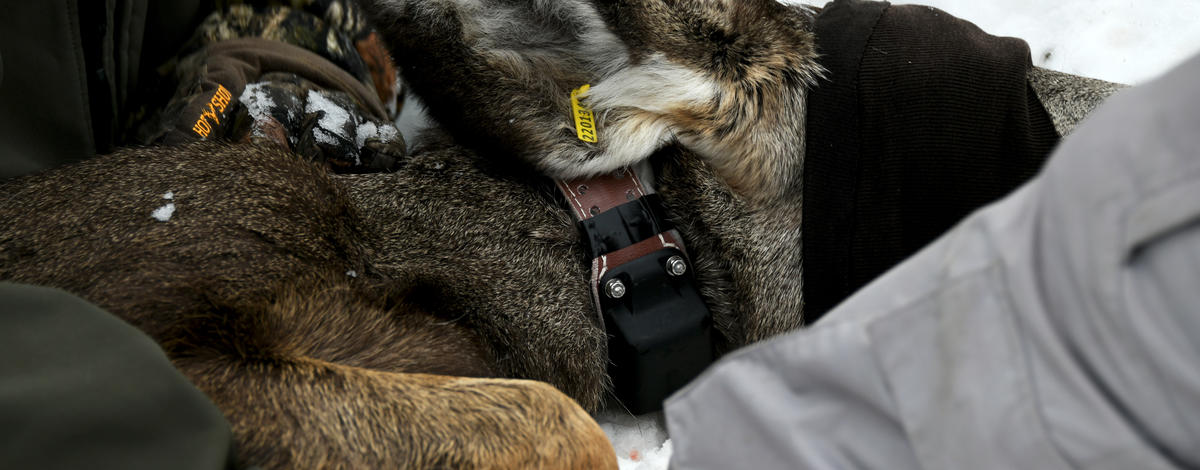Every winter, Fish and Game wildlife biologists across Idaho spend a considerable amount of time capturing and collaring deer, elk and pronghorn that have congregated on winter range. These capture projects provide crucial information that gives wildlife managers a better understanding of where these animals spend their time throughout the year, their migration routes between summer and winter ranges as well as survival rates, especially of fawns and calves.
Biologists typically use three methods to capture wildlife in the winter: drive nets, net gunning and drop nets. These tools provide biologists with the ability to safely and efficiently capture big game animals, allowing staff to actually put hands-on captured wildlife to gather important information such as body weight and condition, genetic and disease samples, and pregnancy status for adult females.
<>Helicopters are used to drive big game into nets, or in the case of net-gunning, a highly-trained biologist will deploy a net from a low-flying helicopter. These efforts are short in duration, typically 2-3 minutes at the most to minimize stress on the animals. Drop nets use food as an attractant to lure animals under a large net that is dropped once animals have congregated underneath.
Types of data gathered and how it’s used
Placing GPS collars around the necks of deer, elk and pronghorn is probably the most visible result of capture operations. These collars collect and transmit location data multiple times a day which biologists use to map movement and migration routes between summer and winter ranges.
Collars can also help biologists and traffic safety engineers determine where animals cross roadways so efforts can be made to reduce wildlife-vehicle collisions and can also provide information about which habitats are preferred by season, which can influence travel management planning and seasonal closures.
GPS collars on fawns and calves allows biologists to monitor over-winter survival, which helps inform management decisions and season-setting by the Idaho Fish and Game Commission especially if recruitment to the population is reduced due to winter mortality. Furthermore, survival monitoring allows biologists to determine cause-specific mortality to evaluate to what extent predation may or may not be limiting a population, which in turn can influence predator management.
Data assists collaboration?
The data sets compiled from winter capture operations can be used by local, state, and federal land management agencies and private industry to inform land-use decisions. Fish and Game’s role in these processes is as a technical advisor about the status and needs of wildlife relative to a proposed development or land use.
Collar data is currently being used by Fish and Game and federal agencies to prioritize habitat restoration projects such as sagebrush planting, aspen regeneration treatments, beaver reintroduction, and to modify or remove existing fences to meet wildlife-friendly standards. Ultimately, collar data can streamline and focus efforts across multiple agencies, resulting in more impactful wildlife and land management in Idaho.
Currently, IDFG has multiple research projects relying on collaring underway across the state. For more information on wildlife research in Idaho please visit https://idfg.idaho.gov/research/wildlife
For more information about big game capture efforts contact your local Fish and Game office.

